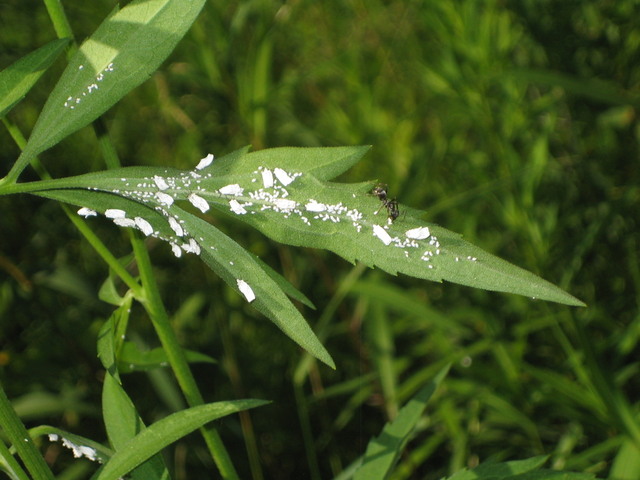Hello! New here and am happy to have found this forum!
I live in Minneapolis, MN and have enjoyed a natural garden for 20 years now. Of course no pesticides are used - I WANT the bugs :) My garden boasts myriad species both of the plant and insect variety and I have enjoyed seeing various and numerous species througout the years.
About 3 yeas ago I noticed some funny white bugs near an ant hill in my garden. I had not introduce anything new - they just appeared next to the ant hive. The following year I saw quite a few of them, and this year the population has exploded - and my yard is certainly ground zero for this species. They sure didn't keep to just my yard, and one neighbor has begun erradication efforts with the thinking these were mealy bugs. Extensive googling and use of the image gallery on this site an others led me to identifying my white mystery bug as ensign coccids. I find hempitrans very exciting as it is, so very curious about the ensign coccids as very little seems to be out there about them. Efforst to contact the U of M entomology department for confirmation of species identification go unanswered. In the mean time my ensign coccids matured to match the images I have found of them on the web.
Is anyone here familiar with this species? Given the large numbers I am encountering I do have concerns over them being a garden pest - this out of concern for my neighbors -so should I attempt to control their population? Does anyone know of natural predators? Also I can't help but think there is a symbiosis with the ants, similar to aphids, as 'ground zero' as next to the anthill. I have also seen ants 'tending' to them, running around leaves packed with the ensign coccids. I would love to hear from anyone who knows about this brilliant white bug!







